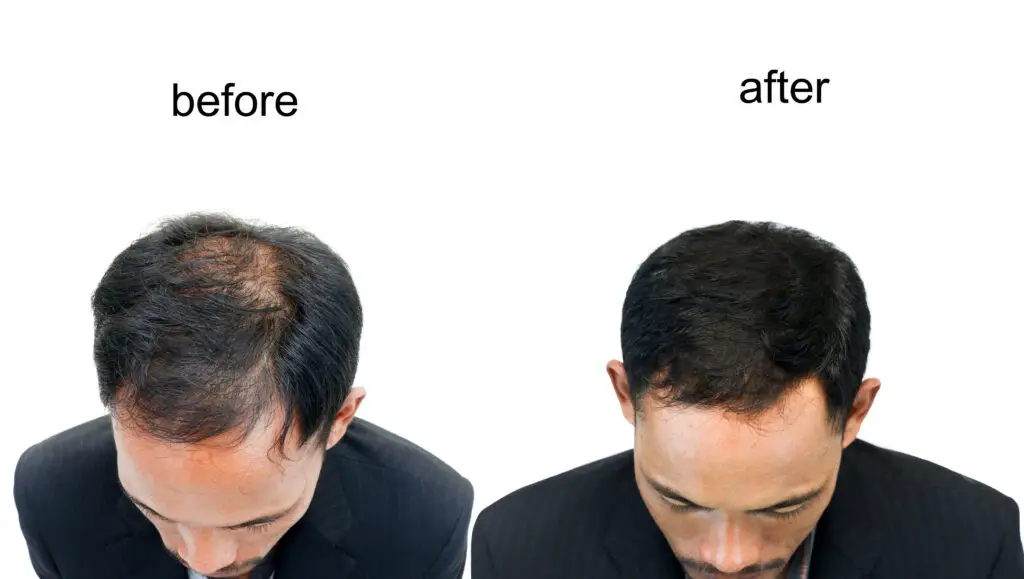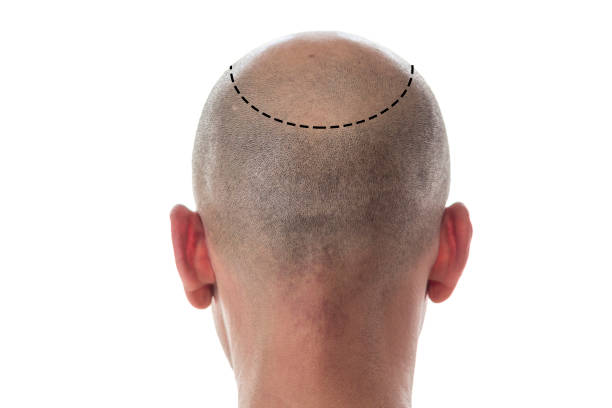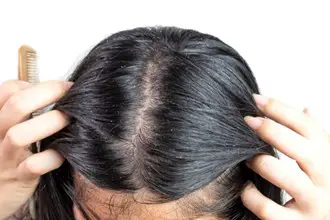Exosomes hair loss is a cutting-edge treatment that’s gaining attention in the field of hair restoration. This comprehensive guide explores everything you need to know about this innovative therapy
Hair loss, a condition that affects millions of people worldwide, can have a profound impact on an individual’s self-esteem and overall quality of life. While there are numerous treatments available, from over-the-counter topical solutions to surgical hair transplants, none offer a guaranteed solution. This is where exosomes, a relatively new player in the field of hair loss treatment, come into the picture.
Exosomes are tiny vesicles released by cells that play a crucial role in cell-to-cell communication. They carry proteins, lipids, and genetic material from one cell to another, influencing various physiological processes. In the context of hair loss, exosomes derived from mesenchymal stem cells (MSCs) have shown promising results in promoting hair growth and regeneration.
The potential of exosome therapy for hair loss is immense. It represents a novel approach that could revolutionize the way we treat hair loss, offering hope to those who have tried other treatments without success. But what exactly is exosome therapy, and how does it work? This article aims to answer these questions and more, providing a comprehensive overview of exosome therapy for hair loss.
Before we delve deeper, it’s important to note that while exosome therapy is a promising treatment, it’s still relatively new. As with any medical procedure, it’s essential to consult with a healthcare professional before deciding on a course of treatment. If you’re interested in learning more about other hair loss treatments, check out our article on PRF hair treatment, a procedure that uses your body’s own platelet-rich fibrin to stimulate hair growth.
In the following sections, we’ll explore the science behind exosomes, how exosome therapy works, the benefits and potential side effects of the treatment, and the cost of undergoing exosome therapy. We’ll also address some frequently asked questions about exosome therapy for hair loss. So, if you’re curious about this innovative treatment, keep reading to learn more.
Stay tuned as we unravel the potential of exosomes in hair loss treatment and how it could be the solution you’ve been searching for. If you’re interested in other innovative approaches to hair loss, don’t forget to check out our article on hair replacement systems, another effective solution for those struggling with hair loss.
Key Takeaways:
- Exosome therapy for hair loss is a promising, cutting-edge treatment that uses the body’s own biological mechanisms to stimulate hair growth and regeneration.
- Exosomes are tiny vesicles released by cells that play a crucial role in cell-to-cell communication. They carry growth factors and proteins that can stimulate hair follicle cells and promote hair growth.
- The procedure involves injecting exosomes, derived from mesenchymal stem cells (MSCs), directly into the scalp. The treatment is minimally invasive and can be completed in a single session.
- Clinical trials have demonstrated that exosome therapy is generally safe, with few reported side effects. Participants in these trials have reported significant improvements in hair growth and density following treatment.
- The cost of exosome therapy for hair loss can vary widely, but on average, it can range from $5,000 to $10,000 per treatment. This cost typically includes the consultation, the preparation of the exosome solution, the procedure itself, and any follow-up appointments.
- While exosome therapy is a significant investment, the potential benefits of the treatment make it a worthwhile consideration for many individuals experiencing hair loss.
- As with any medical procedure, it’s crucial to do your research and consult with a healthcare professional before deciding on a course of treatment. They can provide personalized advice based on your health history and hair loss concerns.
- The field of exosome research is still in its early stages, and many questions remain about the optimal methods for exosome isolation, the best sources of exosomes, and the most effective ways to administer exosome therapy. As research continues, we can expect to see further advancements in exosome therapy for hair loss.
Understanding Exosomes
Exosomes are microscopic vesicles, or sacs, that are released by cells into the extracellular environment. They are part of a group of vesicles known as extracellular vesicles (EVs), which also include microvesicles and apoptotic bodies. Exosomes are the smallest of these, typically measuring between 30 and 150 nanometers in diameter.
Exosomes play a crucial role in cell-to-cell communication. They carry a variety of biological materials, including proteins, lipids, and RNA, from their cell of origin to other cells. This allows them to influence a wide range of physiological processes, from immune response to tissue repair.
In the context of hair loss, exosomes have attracted attention due to their ability to promote hair growth and regeneration. This is largely due to the proteins and growth factors they carry, which can stimulate the hair follicles and protect them from damage.
Exosomes used in hair loss treatment are typically derived from mesenchymal stem cells (MSCs), a type of stem cell that can differentiate into a variety of cell types, including hair follicle cells. MSC-derived exosomes contain anti-inflammatory molecules that can help reduce inflammation in the scalp, a common contributor to hair loss. They also carry molecules that can protect hair follicle stem cells from damage, promoting hair regrowth.
The use of exosomes for hair loss represents a significant shift in how we approach hair loss treatment. Unlike traditional treatments, which often involve drugs or surgery, exosome therapy harnesses the body’s own biological mechanisms to promote hair growth. This not only makes it a more natural treatment option, but also reduces the risk of side effects and complications.
However, it’s important to note that while exosome therapy is a promising treatment, it’s still relatively new. More research is needed to fully understand the mechanisms by which exosomes promote hair growth and to optimize the treatment for best results.
If you’re interested in learning more about the science behind hair loss and its treatment, be sure to check out our article on the stages of male pattern baldness. It provides a comprehensive overview of the causes and progression of male pattern baldness, as well as the various treatment options available.
In the next section, we’ll delve deeper into exosome therapy for hair loss, explaining how the treatment works and what you can expect if you decide to undergo it. If you’re curious about other innovative treatments for hair loss, don’t miss our article on alternatives to hair transplant, which explores other cutting-edge procedures that can help restore your hair without the need for surgery.
Exosome Therapy for Hair Loss
Exosome therapy for hair loss is a cutting-edge treatment that leverages the power of exosomes to stimulate hair growth and regeneration. The procedure involves injecting exosomes, derived from mesenchymal stem cells (MSCs), directly into the scalp. These exosomes carry growth factors and proteins that can protect hair follicle stem cells from damage and promote hair regrowth.
The process begins with a consultation with a healthcare professional to determine if you’re a suitable candidate for exosome therapy. This typically involves a thorough examination of your scalp and a discussion about your medical history and hair loss concerns.
Once you’re deemed a suitable candidate, the treatment can proceed. The exosomes are prepared in a lab, where they are isolated from MSCs and concentrated into a solution. This solution is then injected into the areas of your scalp where hair loss is most severe.
The procedure is minimally invasive and can be completed in a single session, which usually lasts about an hour. Most patients report minimal discomfort during the procedure, and there’s typically no downtime required afterward.
The results of exosome therapy for hair loss can be quite impressive. Many patients report seeing new hair growth as early as two to three months after the treatment. However, it’s important to note that results can vary from person to person, and multiple treatments may be required to achieve the desired results.
Exosome therapy represents a significant advancement in hair loss treatment. It offers a more natural alternative to drugs and surgery, with fewer side effects and complications. However, as with any medical procedure, it’s important to consult with a healthcare professional before deciding on a course of treatment.
If you’re interested in exploring other innovative treatments for hair loss, be sure to check out our article on crown hair transplants. This procedure can be a great option for those experiencing hair loss at the crown of the head.
In the next section, we’ll delve deeper into the benefits and potential side effects of exosome therapy. We’ll also discuss the cost of the treatment and how it compares to other hair loss treatments. If you’re curious about other ways to combat hair loss, don’t miss our article on vertex scalp treatments, which explores various procedures designed to restore hair growth in the vertex region of the scalp.
Clinical Evidence Supporting Exosome Therapy
As with any emerging medical treatment, it’s crucial to examine the clinical evidence supporting exosome therapy for hair loss. While exosome therapy is still relatively new, early studies have shown promising results.
Preclinical studies have demonstrated clear benefits of exosome therapeutics in regenerative medicine and for hair loss treatment. These studies have shown that exosomes can stimulate hair follicle cells, promoting hair growth and reducing hair loss.
In one study, researchers found that exosomes derived from MSCs could promote hair growth in mice. The exosomes were found to stimulate the proliferation of hair follicle cells and prolong the growth phase of the hair cycle, leading to increased hair growth.
Clinical trials have also been conducted to assess the safety and efficacy of exosome therapy for hair loss in humans. These trials have demonstrated that exosome therapy is generally safe, with few reported side effects. Participants in these trials have reported significant improvements in hair growth and density following treatment.
However, it’s important to note that while these results are promising, more research is needed. The field of exosome research is still in its early stages, and many questions remain about the optimal methods for exosome isolation, the best sources of exosomes, and the most effective ways to administer exosome therapy.
If you’re interested in learning more about the science behind hair loss and its treatment, be sure to check out our article on receding hairline stages. It provides a comprehensive overview of the causes and progression of receding hairlines, as well as the various treatment options available.
In the next section, we’ll discuss the potential side effects of exosome therapy and what you can expect if you decide to undergo this treatment. If you’re curious about other innovative treatments for hair loss, don’t miss our article on Norwood 3 Vertex treatments, which explores various procedures designed to restore hair growth in individuals at this stage of hair loss.
Potential Side Effects of Exosome Therapy
As with any medical procedure, exosome therapy for hair loss may have potential side effects. However, because exosome therapy is a relatively new treatment, the full range of potential side effects is not yet fully understood.
Most reported side effects of exosome therapy are mild and temporary. These may include redness, swelling, or discomfort at the injection site. These symptoms typically resolve on their own within a few days.
More serious side effects are rare but can include infection or allergic reaction. These risks can be minimized by ensuring the procedure is performed by a qualified healthcare professional in a sterile environment.
It’s also important to note that while exosome therapy has shown promise in promoting hair growth, results can vary from person to person. Some individuals may see significant improvements, while others may notice only minimal changes. Multiple treatments may be necessary to achieve the desired results.
Before deciding to undergo exosome therapy, it’s crucial to discuss the potential risks and benefits with a healthcare professional. They can provide personalized advice based on your health history and hair loss concerns.
If you’re interested in exploring other treatments for hair loss, be sure to check out our article on balding at the crown. This article provides a comprehensive overview of the causes and treatment options for hair loss at the crown of the head.
In the next section, we’ll discuss the cost of exosome therapy and how it compares to other hair loss treatments. If you’re curious about other ways to combat hair loss, don’t miss our article on hair replacement systems near me, which explores various procedures designed to restore hair growth without the need for surgery.
Cost of Exosome Therapy for Hair Loss
The cost of exosome therapy for hair loss can vary widely depending on several factors. These can include the provider’s expertise, the geographic location of the clinic, the number of treatment sessions required, and any additional services provided during the treatment.
On average, exosome therapy for hair loss can range from $5,000 to $10,000 per treatment. This cost typically includes the consultation, the preparation of the exosome solution, the procedure itself, and any follow-up appointments.
While this may seem like a significant investment, it’s important to consider the potential benefits of the treatment. Exosome therapy is a cutting-edge treatment that harnesses the body’s own biological mechanisms to promote hair growth. It offers a more natural alternative to drugs and surgery, with fewer side effects and complications.
However, it’s also important to note that exosome therapy is not typically covered by insurance, as it is considered a cosmetic procedure. Therefore, the cost of the treatment will usually need to be paid out-of-pocket. Some clinics may offer financing options or payment plans to help make the treatment more affordable.
Before deciding to undergo exosome therapy, it’s crucial to discuss the potential costs with a healthcare professional. They can provide a detailed breakdown of the costs associated with the treatment and help you understand what to expect.
If you’re interested in exploring other treatments for hair loss, be sure to check out our article on alternative to hair transplant. This article provides a comprehensive overview of the various non-surgical procedures available to restore hair growth.
In the next section, we’ll address some frequently asked questions about exosome therapy for hair loss. If you’re curious about other ways to combat hair loss, don’t miss our article on male pattern baldness stages, which explores the progression of hair loss in men and the various treatment options available at each stage.
FAQs: about Exosomes Hair Loss
What is exosome therapy for hair loss?
Exosome therapy for hair loss is a cutting-edge treatment that involves injecting exosomes, derived from mesenchymal stem cells (MSCs), into the scalp. These exosomes carry growth factors and proteins that can stimulate hair follicle cells, promoting hair growth and reducing hair loss.
How does exosome therapy work?
Exosome therapy works by harnessing the power of exosomes, tiny vesicles released by cells that play a crucial role in cell-to-cell communication. When injected into the scalp, these exosomes deliver growth factors and proteins that can stimulate hair follicle cells and promote hair growth.
Is exosome therapy safe?
Exosome therapy is generally considered safe, with most reported side effects being mild and temporary. However, as with any medical procedure, there are potential risks, and it’s important to discuss these with a healthcare professional before deciding on a course of treatment.
How much does exosome therapy cost?
The cost of exosome therapy for hair loss can vary widely, but on average, it can range from $5,000 to $10,000 per treatment. This cost typically includes the consultation, the preparation of the exosome solution, the procedure itself, and any follow-up appointments.
How soon can I see results from exosome therapy?
Many patients report seeing new hair growth as early as two to three months after the treatment. However, results can vary from person to person, and multiple treatments may be required to achieve the desired results.
If you’re interested in learning more about hair loss and its treatment, be sure to check out our comprehensive guide on receding hairline stages. It provides a detailed overview of the causes and progression of receding hairlines, as well as the various treatment options available.
In the next section, we’ll wrap up our discussion on exosome therapy for hair loss. If you’re curious about other ways to combat hair loss, don’t miss our article on vertex scalp treatments, which explores various procedures designed to restore hair growth in the vertex region of the scalp.
Conclusion
Exosome therapy for hair loss represents a significant advancement in the field of hair restoration. By harnessing the body’s own biological mechanisms, exosome therapy offers a more natural alternative to traditional hair loss treatments, with fewer side effects and complications.
While the cost of exosome therapy can be a significant investment, the potential benefits of the treatment make it a worthwhile consideration for many individuals experiencing hair loss. With the ability to stimulate hair follicle cells and promote hair growth, exosome therapy has the potential to not only restore hair but also boost confidence and improve quality of life.
However, as with any medical procedure, it’s crucial to do your research and consult with a healthcare professional before deciding on a course of treatment. They can provide personalized advice based on your health history and hair loss concerns, helping you make an informed decision about whether exosome therapy is right for you.
As the field of exosome research continues to evolve, we can expect to see further advancements in exosome therapy for hair loss. With ongoing research and clinical trials, we’re likely to gain a deeper understanding of the mechanisms by which exosomes promote hair growth, leading to more effective and optimized treatments.
If you’re interested in exploring other treatments for hair loss, be sure to check out our article on hair replacement systems near me. This article provides a comprehensive overview of the various non-surgical procedures available to restore hair growth.
In the end, the most important thing is to choose a hair loss treatment that aligns with your needs, preferences, and lifestyle. Whether that’s exosome therapy, a hair transplant, or another form of treatment, the goal is to find a solution that helps you feel confident and comfortable in your own skin.
For more information on hair loss and its treatment, don’t miss our comprehensive guide on male pattern baldness stages. It provides a detailed overview of the causes and progression of male pattern baldness, as well as the various treatment options available at each stage.
- AI Powered Bald Filter Online 2024: See Yourself with No Hair! - January 19, 2024
- Harklinikken Bad Reviews 2024: Analyzing Negative Feedbacks - January 18, 2024
- How to Get the Alex Eubank Hair | Step-By-Step Tutorial 2024 - January 18, 2024







